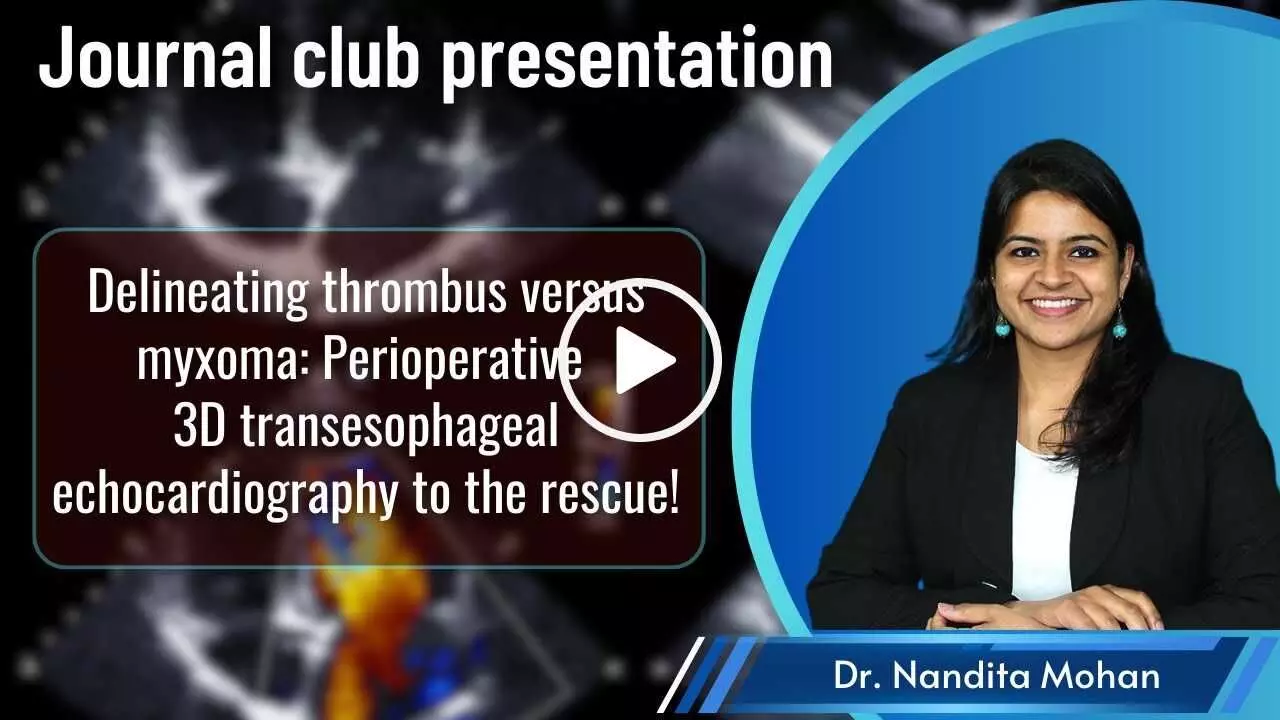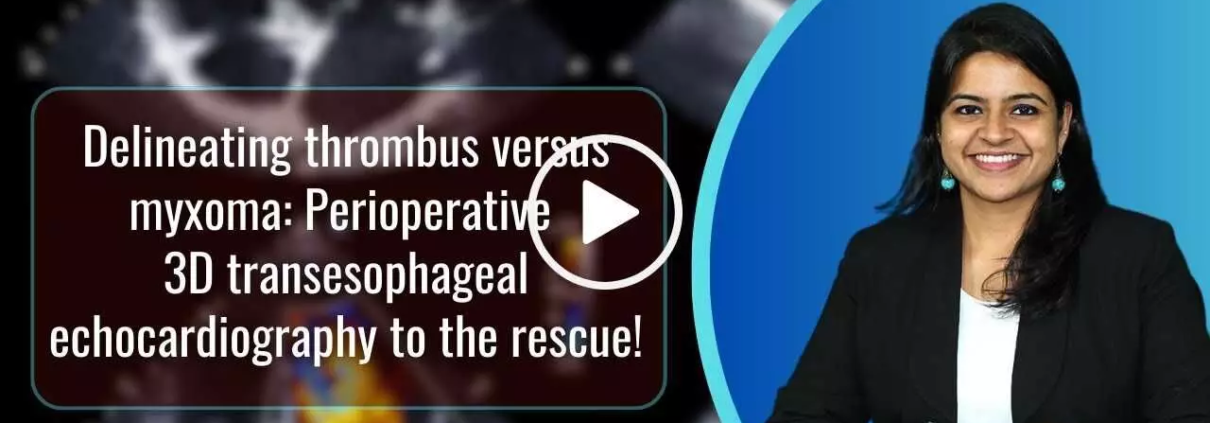Journal Club: Delineating thrombus versus myxoma- Perioperative 3D transesophageal echocardiography to the rescue

Cardiac masses are a significant cause of patient morbidity and mortality by virtue of their symptoms and surgical removal. Preoperative diagnosis of a cardiac mass is usually based on clinical correlation and transthoracic echocardiography findings. Myxomas are the most common benign cardiac tumors, commonly occurring in the left atrium attached to the interatrial septum near the fossa ovalis. Although, at times atypical location and unusual morphology may pose a diagnostic dilemma with 2D echocardiography. 3D echocardiography with its multifaceted advantages, including multiplanar cropping abilities and superior imaging quality can help distinguish between a clot and a myxoma.
Presenting the case report that is published in the Journal of Clinical Imaging Science published by Scientific Scholar
A 19-year-old male presented with gradually worsening dyspnea on exertion over 2 years with associated complaints of abdominal distension and pedal edema for 12 months. The patient also had a history of atrial fibrillation. Transthoracic echocardiography revealed a dilated RA with spontaneous echo contrast, dilated and severely dysfunctional right ventricle, and a sessile solitary mass attached to the RA-free wall.
Valvular pulmonary stenosis was also noted. Taking into consideration the clinical and echo findings, the mass was diagnosed as a thrombus. Low-molecular-weight heparin therapy was started, and the patient was planned for clot removal and pulmonary valvotomy.
Intraoperative 2D transesophageal echocardiography revealed a 3.5 cm × 3.8 cm echodense, homogeneous, ovoid-shaped, sessile, and immobile mass situated below the superior vena cava on the RA free wall, suggestive of a thrombus. 3D echocardiography confirmed it to be a solitary, sessile mass; however, the 3D volume data set analysis showed that the mass had a heterogeneous, granular surface texture, few irregular calcifications in crop plane view, and random small areas of echolucency, suggestive of a tumor rather than a thrombus. Surgically excised mass pointed toward it being a myxoma.
Hence, the authors concluded that an intracardiac mass should be evaluated taking into consideration the clinical setting, age of the patient, tumor location, and echocardiography findings. 3D transesophageal echocardiography gives us greater imaging quality and additional information, improving the sensitivity and specificity of diagnosis compared to 2D imaging.
Reference: Badge M, Kapoor PM, Thiruselvan T, Francis J. Delineating thrombus versus myxoma: Perioperative 3D transesophageal echocardiography to the rescue! J Clin Imaging Sci. 2024;14:6. doi: 10.25259/JCIS_136_2023
Facebook Comments


